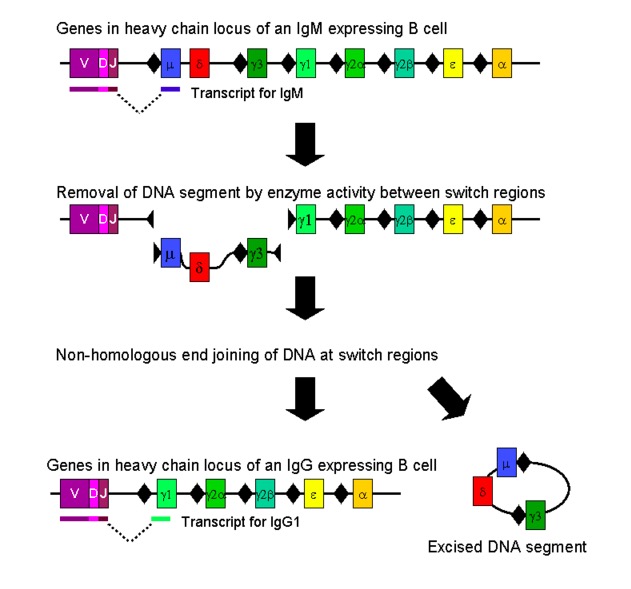Playlist
Show Playlist
Hide Playlist
Antibodies – Protein Functions
-
05 Basic ProteinFunctions.pdf
-
Biochemistry Free and Easy.pdf
-
Reference List Biochemistry.pdf
-
Download Lecture Overview
00:01 In this lecture, I will discuss four more functions proteins carry out for the organisms and the cells within them. These functions include proteins functioning as antibodies in the immune system, proteins and their role in regulating gene expression, proteins acting as enzymes to catalyze reactions, and finally proteins acting to transport materials across biological membranes and within organisms. 00:24 Now multicellular organisms have an immune system that protects them against outsiding invaders. The functional parts of the immune system are antibodies, as seen in this slide. 00:34 Antibodies are proteins that are produced by the adaptive immune system of a multicellular organism. Now the antibodies are the functional part of that adaptive immune system. 00:43 They recognize and bind to specific molecules, and those specific molecules are called antigens as seen on the screen above. The remarkable thing about the adaptive immune system is that antibodies can be created to recognize things that the body never before encountered. 00:58 Now antibodies are present in both soluble forms, meaning released freely, and also in membrane-bound forms. The structure of antibodies is shown on the screen, and in this slide you can see that the antibody consists of four polypeptide chains. Two long chains that are called heavy chains that are the central part of the Y, and the two heavy chains are joined to each other at the bottom of the Y by disulfide bonds. The antibody also consists of two light chains that are joined to the heavy chains at the upper part of the Y. 01:31 The light chains are joined to the heavy chains also by disulfide bonds. Now as we examine the antibody overall, we see that there are different regions of the antibody that have functions that they perform in the recognition. For example, the bottom part of the antibody or the bottom part of the Y as you see it, is a region that’s called the constant region, and in this region the sequence of amino acids is relatively constant from one antibody to another within a given type of antibody. By contrast, the region above the constant regions are called the variable regions and it's in the variable regions where the binding site for the antigens occurs, and note that the constant regions are part of both the light chain and of the heavy chain. The amazing thing about antibodies is the diversity of antibodies. 02:20 It is estimated that the human body can produce up to 1 trillion antibodies and that’s given the fact that it has a genome of only about 7 billion base pairs. This remarkable diversity of antibodies that the immune system can produce is a result of shuffling, of both DNA sequences and RNA sequences, to make this multitude of different possible structures that can be there. More structures translate to more antigens that can be bound by an antibody. 02:47 It is true that immune cells are the only cells in the human body that are different from each other in terms of DNA sequence because of the shuffling that occurs within them.
About the Lecture
The lecture Antibodies – Protein Functions by Kevin Ahern, PhD is from the course Biochemistry: Basics.
Included Quiz Questions
Which of the following is true regarding the immune system of multicellular organisms?
- Under normal circumstances, antibodies bind and recognize “foreign” molecules.
- Antigens have a “Y-shaped" structure.
- The constant region of the antibody is the binding portion of the molecule.
- The immune response is generated by the injection of antibodies into the bloodstream.
- Antibodies exist only as membrane-bound proteins.
Customer reviews
5,0 of 5 stars
| 5 Stars |
|
5 |
| 4 Stars |
|
0 |
| 3 Stars |
|
0 |
| 2 Stars |
|
0 |
| 1 Star |
|
0 |





